If you’ve ever driven past a massive construction site or forestry clearing operation and spotted a towering machine chewing through logs like they were matchsticks, chances are you’ve seen a tub grinder in action. These powerful machines are essential tools in forestry, agriculture, land clearing , and recycling, turning piles of waste wood and green debris into valuable, usable products like mulch, compost, or biofuel. Now, we’ll introduce this wood grinding machine in detail, helping you get a brief understanding of it.
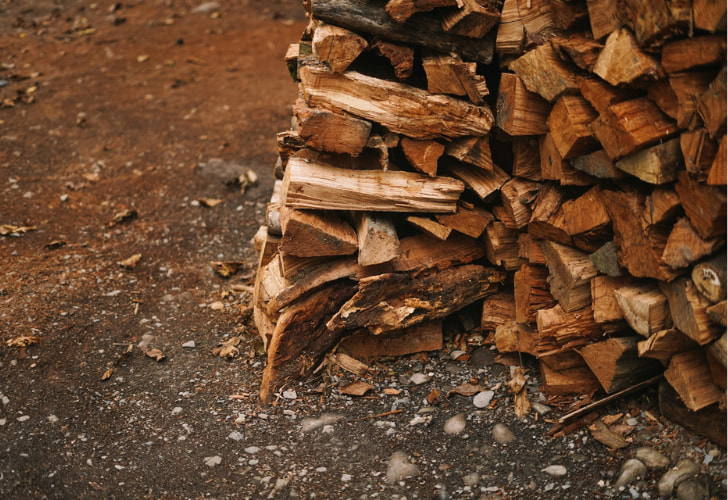
(Image Source: unsplash.com)
What Is a Tub Grinder?
Simply put, a tub grinder is a heavy-duty machine designed to grind and process bulky organic materials such as logs, stumps, branches, bark, and even construction wood waste. Named for its large, tub-shaped hopper, this type of grinder uses gravity to help feed materials into a rotating hammermill. Unlike smaller residential chippers, industrial tub grinders are built for serious volume, and some models can process up to 100 tons of vegetative debris per hour.
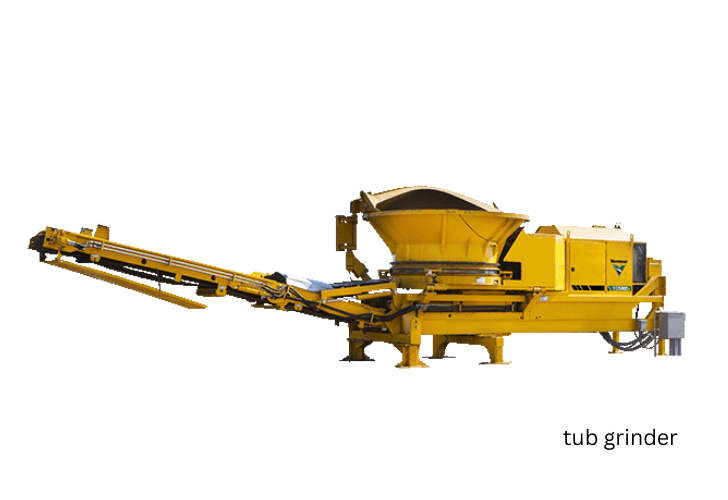
(Image Source: vermeer.com)
These grinders are popular in forestry and land management because they help convert wood waste into useful end products like mulch or boiler fuel. Many contractors also use tub grinders on-site during land development to reduce disposal costs, avoid open burning, and repurpose rough mulch for landscaping.
You’ll also find agricultural tub grinders, which are smaller and often powered by a tractor PTO. These models are great for processing hay, straw, and other feedstocks into animal bedding or feed.
How Does a Tub Grinder Work?
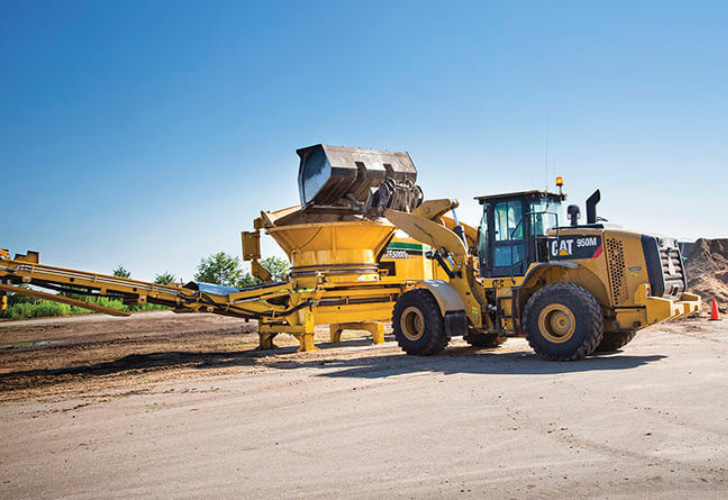
(Image Source: vermeer.com)
At the heart of every tub grinder is a large, cylindrical infeed hopper, the “tub”, typically 10 to 14 feet in diameter. Material is loaded into the tub using loaders or excavators. As the tub rotates, gravity pulls the debris downward into a hammermill located at the base of the machine. The hammermill, powered by a diesel engine, shreds the material into smaller pieces using either fixed or swinging hammers.
Screens beneath the hammermill determine the final particle size. A conveyor system then transports the ground material away for collection or reuse. The entire process is remarkably efficient. Depending on the desired finish, materials may be passed through the grinder multiple times.
Key Components of a Tub Grinder
Engine: The powerhouse of the tub grinder, usually a high-horsepower diesel engine. Higher horsepower means greater flexibility in the types of materials you can process and overall productivity.
Hammermill: This is the main grinding mechanism. Fixed hammer setups are ideal for heavy-duty materials like logs and stumps, while swinging hammers are better for softer materials like bark, producing a more uniform finish and reducing the risk of internal damage from hard debris.
Tub Diameter: Tub size matters for both capacity and compatibility with your support equipment. Larger tubs allow more material but require higher lift equipment for loading. It’s crucial to match your loader bucket size with the tub opening for safe and efficient feeding.
Screens: Located beneath the hammermill, these determine the final output size and are often selected based on the material type and desired end product.
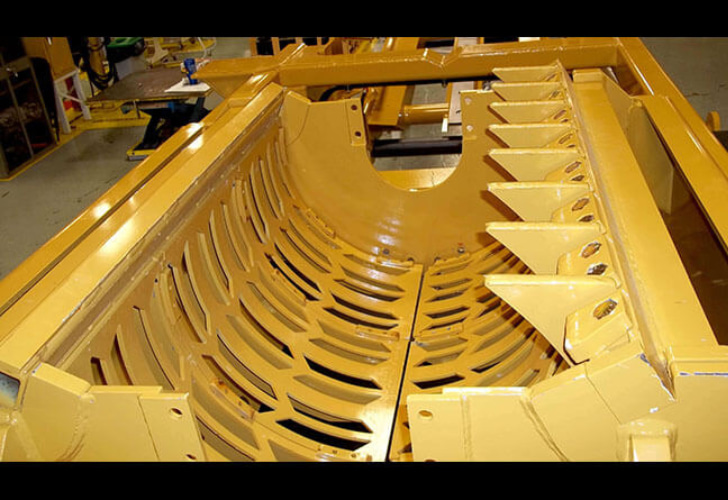
(Image Source: vermeer.com)
Conveyor System: This moves the ground material away from the grinder. A continuous discharge conveyor ensures smooth operation and efficient handling of processed materials.
Tub Grinder vs. Horizontal Grinder
So, how does a tub grinder compare to a horizontal grinder? The choice depends on your priorities, work site, and the kind of materials you’re processing.
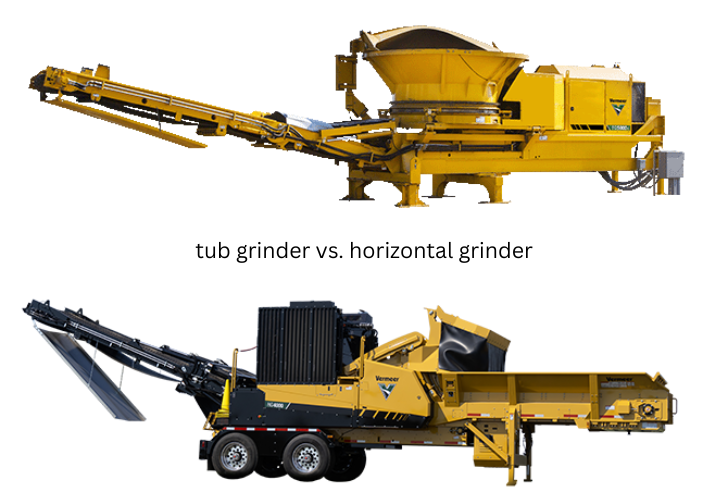
(Image Source: vermeer.com)
Finished Product Control: Tub grinders are ideal for primary grinding but may struggle to produce uniform, fine particles without multiple passes. Horizontal grinders, in contrast, offer greater control and are better suited for finished products like landscape mulch or compost additives.
Feeding Efficiency: Tub grinders rely on gravity and tub rotation, which can result in inconsistent feed rates, especially with light or dense materials. Horizontal grinders use a feed drum that ensures a steady, controlled input, optimizing both productivity and motor performance.
Safety: Due to their open-top design, tub grinders can eject debris at high speeds, posing a hazard to nearby operators. While some models use deflectors, the risk remains higher than with horizontal grinders. Horizontal grinders enclose the grinding mechanism, significantly reducing the distance and direction of thrown debris.
Application Fit: Tub grinders are preferred for high-volume wood waste processing in open areas, where speed and capacity matter most. Horizontal grinders are better suited for applications that require more control, finer output, or enhanced safety protocols, such as in residential zones or composting operations.
Conclusion

(Image Source: unsplash.com)
Tub grinders are fantastic machinery for turning wood waste into useful byproducts quickly and effectively. By learning how they work, what their key parts are, and how they compare to horizontal grinders, you can choose the right one for your needs. Whether you’re clearing land, handling storm debris, or making mulch and compost, picking the right grinder can really boost your efficiency and safety, while also improving the quality of your end products.
*All of the above images are not intended for commercial use.
